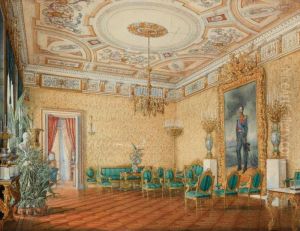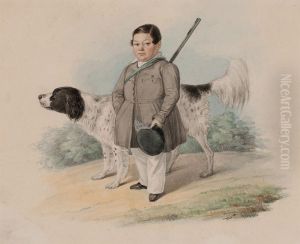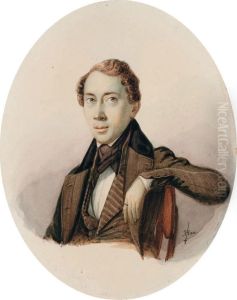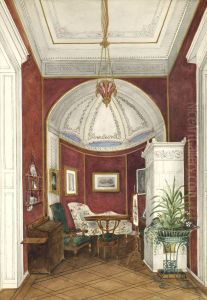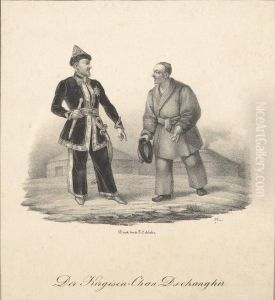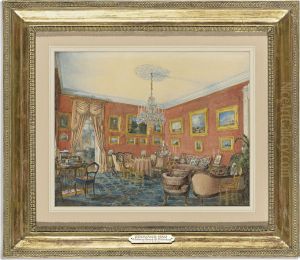Eduard Petrovich Hau Paintings
Eduard Petrovich Hau was a prominent Russian artist of Baltic German heritage, known for his exceptional work as a portraitist and watercolorist. Born on July 18, 1807, in Mitau (now Jelgava, Latvia), Hau's artistic journey began in the cultural atmosphere of the Baltic region, which was then part of the Russian Empire. His early artistic education took place in Saint Petersburg, where he was greatly influenced by the rich artistic traditions of the Russian imperial capital. Hau's talent was recognized early on, and he was admitted to the Imperial Academy of Arts in Saint Petersburg, where he honed his skills and developed a keen interest in portrait painting.
Hau's career took a significant turn when he traveled to Europe for further study, a common practice among artists of his time seeking to immerse themselves in the broader European artistic landscape. He spent considerable time in Italy and Germany, studying the masterworks of European art, which profoundly influenced his style and technique. Upon his return to Russia, Hau became a court painter, a prestigious position that afforded him the opportunity to portray members of the Russian imperial family and the aristocracy. His portraits were highly regarded for their meticulous detail, vibrant realism, and the ability to capture the personality and essence of his subjects.
In the mid-19th century, Hau also became known for his work in watercolors, a medium in which he excelled. His watercolor paintings, often depicting interiors of the Winter Palace and other significant landmarks, were celebrated for their intricate detail and luminosity. Hau's ability to render light and shadow with such precision made his watercolors particularly admired and sought after.
Throughout his career, Eduard Hau remained closely connected to the Russian court and its circle, which significantly influenced his artistic output. His portraits not only serve as a testament to his skill as an artist but also offer a fascinating glimpse into the opulent world of the Russian aristocracy during the 19th century. Hau's work is preserved in several major museums, including the Hermitage Museum in Saint Petersburg, where his contributions to Russian and European art history are recognized and celebrated.
Eduard Petrovich Hau passed away on March 13, 1887, in Saint Petersburg, leaving behind a legacy as one of the foremost portrait painters of his era. His work continues to be studied and admired for its artistic merit and historical significance, offering insight into the social and cultural milieu of 19th-century Russia.
